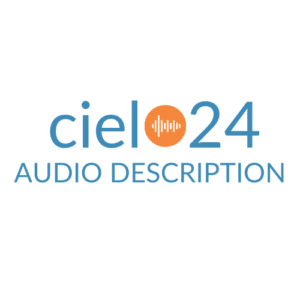The age-old discussion of man versus machine seems to be never-ending. On one hand, the…

Machine vs. Human Transcription
Transcription comes with lots of pros that can’t be ignored. It’s time to knock on the door of the world of human vs. machine transcription.
For the people who prefer reading over watching, transcriptions have proved to reduce their struggles significantly. Getting audio transformed into text could be done in two ways; by using AI/machine or human-verified transcription. This blog will delve into the pros and cons of both and present use cases of machine vs. human transcription.
Artificial Intelligence/Machine Transcription
As the name suggests, machine transcription uses software to recognize audio and turn it into text with minimal human assistance. Just like any other machine automated processes, AI transcription takes very little time and lessens human efforts. However, it’s accuracy does not meet the 99% accuracy threshold need for compliance requirements.

Machine transcription is affordable and converts the audios to text in less than a minute, providing sufficient accuracy to the user. If you are looking for a transcription solution for bulk work or at a low-cost, this method might be your best option.
Human Transcription
In simple words, human transcription involves real people listening to the speech and dialogues of an audio file and manually giving it a textual structure. Since human transcription uses cognitive power, the results are more accurate, up to 99%, when compared with AI transcription style. Especially if the recording or video file is of lower quality, machines have a difficult time making out every nuance of tone, dialect, or jargon.
Human transcriptionists can also provide speaker identification, perform foreign language translations, and include descriptive explanations that go beyond speech-to-text alone. Human transcriptions offer features far above and beyond what a machine transcription can provide.
However, while this method has the pros of accuracy and veracity, it can be time-consuming and involve tremendous human efforts that aren’t possible in-house. Thus, it requires a larger financial burden than machine when outsourcing transcription. Businesses that treasure authenticity over time and budget should utilize human over machine transcription.
When To Use Machine vs. Human Transcription
Machine Transcription
- Need immediate turnaround
- Have a tight budget
- Have a large amount of content you need to transcribe
- Have a very clear audio file
- Accuracy isn’t critical
- Are free to spend time editing the file
- SEO considerations are not very significant
Human Transcription
- Federally required to have accurate captions
- Need or want accuracy for improved brand perception
- Have more money to invest
- Don’t have time to spend on editing your own content
- Want to formally publish your work
- Want to significantly boost your SEO
- Have low-quality recording
- Have a recording with foreign languages that need translating
- Have a recording with heavy accents, dialect or jargon that needs identifying
- Have multiple speakers that need identifying
- Have contextual elements beyond speech-to-text that need identifying
Machine vs. Human Transcription: Things To Think About
There is no correct answer to the human vs machine question when it comes to transcription. Both the modes have their pros and cons and prove to be meritorious depending on the case at hand. What one can do is derive an overall yield considering various aspects attached to the transcription process and check a particular method’s compatibility with the project.
We have tried to compare machine and human transcription and draw a contrast between the two based on their efficiency in different related fields.
Speed
The speed offered by automated transcription is unmatched. The audio that would take hours of labor to get transcribed by a human could be done within a few minutes with the help of machines and software. Speed is a crucial element when tasked with a bulk of work to do in a specified time. Additionally, when your company’s human resources are limited, machines are the best companion.
Cost
The cost difference between machine and human transcription is evident. While human captioning only starts at $1/minute, AI transcription starts at almost a tenth of that, making it a cost-effective choice. However, when considering selecting AI transcription, it’s important to keep in mind the extra time required for you or your organization to edit the transcript for accuracy. If accuracy is something that doesn’t hold much importance in your project, machine transcription is what you need to proceed with. It will provide you with the desired result, with maximum speed under an affordable budget.
Accuracy of Machine vs. Human Transcription
Machine transcription seems like the ultimate winner until the question of accuracy comes into the picture. For the companies and individuals whose work requires impeccable accuracy, machine transcription proves to be incompatible. The following are few ways in which human-based transcription produces more accurate transcripts:
Context
You can not expect a robot to understand the hidden contextual meaning of speech. Machines do not have the specific intelligence to differentiate between subject matters and understand their meaning in the correct way. A human’s cognitive intelligence and experience is needed to effectively comprehend and record transcripts accurately.
Accents
Teaching innumerable dialects and pronunciations to a machine is impossible. This factor makes the machine transcription method ineffectual when dealing with audio that contains dialogues from multiple speakers with varied accents. Machines often tend to covert dialogues while transcribing them to text which changes the true meaning of the subject matter.
Background Noises
When recording content for machine transcription, the audio needs to be as clear as possible. This means eliminating all possible background noises, such as other speakers, wind, shuffling of papers, etc. Background noises poses a major difficulty when compared to human transcription and affects the overall quality of your work.
Speaker IDs
Machine transcription systems can’t differentiate between multiple speakers in given audio, especially if they have heavy accents or there is background noise. This leads to an output of illogical or confusing text. A human transcriber is capable of drawing differences between multiple speakers and understand their different accents. Deciphering the audio becomes easier and more accurate via manual transcription.
Slang & Jargon
Your given audio might contain popular slang terms or subject-related jargon. However, AI transcription is not programmed well enough to understand the meanings of these terms and transcribe them appropriately. Usually, this results in the machine using the closest word that matches the slang or jargon or autocorrecting it to a completely different word. In any way, your transcribed file will make no sense and be corrupted with nonsensical terms and phrases.
Proper Nouns
Names of people and places might sound illogical to machines and often they will change these terms to adhere to strict grammar rules. Since machines are not capable of understanding the meaning of everything that is spoken, they just transcribe speeches based on how they sound. When it comes to transcribing unfamiliar words, humans can research, understand, and correctly spell in a way unmatched by AI transcription.
cielo24 provides Audio Description accessibility solutions
 Looking for Audio Description? Get started with WCAG 2.1 AA compliant Audio Description product.
Looking for Audio Description? Get started with WCAG 2.1 AA compliant Audio Description product.
cielo24’s new Audio Description solution brings an improved video experience to people with low vision, vision impairment, and blindness. Give it a try now >>



